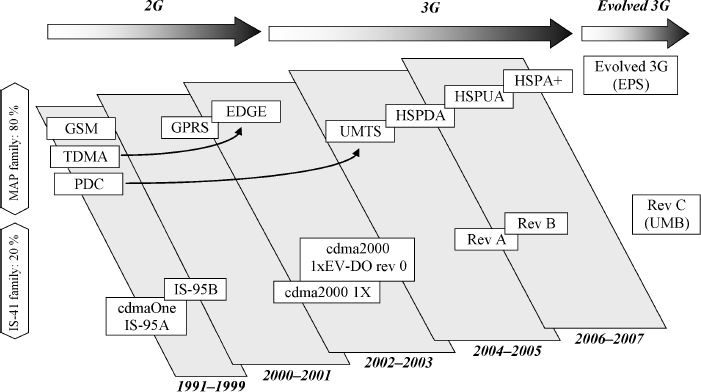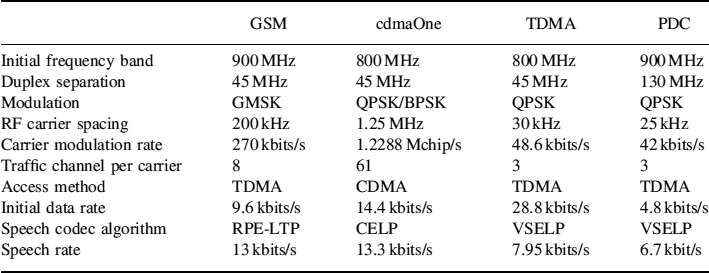1.2 About Technologies
This section provides an overview of the main 2G and 3G technologies, their evolutions, and how they relate to each other. At first glance, the picture represented by Figure 1.3 contains lots of different systems, but most of them actually fall into two main families: the ‘MAP’ and the ‘IS-41’. In mid-2006, MAP (Mobile Application Part) systems were adopted by 80% of the subscriber base, while the IS-41 family captured the remaining 20%.
Most of the networks which were using PDC and TDMA moved towards MAP systems (Japan PDC was replaced by UMTS in 2001 and most of the TDMA networks have been upgraded to 2G EDGE). This is the reason why PDC and TDMA systems are considered in this picture as being part of the MAP family, although not being MAP technologies as such.

Figure 1.3 Evolutionary path of 2G and 3G technologies.
Table 1.1 Core parameters of the main 2G systems.

Both 3G standard family systems are moving towards Evolved 3G technologies. On the MAP side, Evolved 3G systems are known as EPS (Evolved Packet System), described in this book. The IS-41 standard family will move towards cdma2000 Revision C, also known as UMB (Ultra Mobile Broadband).
1.2.1 Heterogeneous 2G Systems
This section provides a very brief description of the main 2G systems' initial ...
Get Evolved Packet System (EPS): The LTE and SAE Evolution of 3G UMTS now with the O’Reilly learning platform.
O’Reilly members experience books, live events, courses curated by job role, and more from O’Reilly and nearly 200 top publishers.

